Quick filters:
Aurangzeb throne Stock Photos and Images
 India: The court of Shah Jahan loved elephant fights. In this painting, an elephant called Sudhakar faces down the forces of Prince Aurangzeb, 1636. During the reign of Shah Jahan (1626-58) as emperor, a war of succession to the Mughal throne ensued. The emperor's youngest son, and the governor of Deccan, Abu Muzaffar Muhiuddin Aurangzeb, was amongst the protagonists, and was the ultimate victor in this war after deposing his father. Stock Photohttps://www.alamy.com/image-license-details/?v=1https://www.alamy.com/india-the-court-of-shah-jahan-loved-elephant-fights-in-this-painting-an-elephant-called-sudhakar-faces-down-the-forces-of-prince-aurangzeb-1636-during-the-reign-of-shah-jahan-1626-58-as-emperor-a-war-of-succession-to-the-mughal-throne-ensued-the-emperors-youngest-son-and-the-governor-of-deccan-abu-muzaffar-muhiuddin-aurangzeb-was-amongst-the-protagonists-and-was-the-ultimate-victor-in-this-war-after-deposing-his-father-image344229386.html
India: The court of Shah Jahan loved elephant fights. In this painting, an elephant called Sudhakar faces down the forces of Prince Aurangzeb, 1636. During the reign of Shah Jahan (1626-58) as emperor, a war of succession to the Mughal throne ensued. The emperor's youngest son, and the governor of Deccan, Abu Muzaffar Muhiuddin Aurangzeb, was amongst the protagonists, and was the ultimate victor in this war after deposing his father. Stock Photohttps://www.alamy.com/image-license-details/?v=1https://www.alamy.com/india-the-court-of-shah-jahan-loved-elephant-fights-in-this-painting-an-elephant-called-sudhakar-faces-down-the-forces-of-prince-aurangzeb-1636-during-the-reign-of-shah-jahan-1626-58-as-emperor-a-war-of-succession-to-the-mughal-throne-ensued-the-emperors-youngest-son-and-the-governor-of-deccan-abu-muzaffar-muhiuddin-aurangzeb-was-amongst-the-protagonists-and-was-the-ultimate-victor-in-this-war-after-deposing-his-father-image344229386.htmlRM2B0102J–India: The court of Shah Jahan loved elephant fights. In this painting, an elephant called Sudhakar faces down the forces of Prince Aurangzeb, 1636. During the reign of Shah Jahan (1626-58) as emperor, a war of succession to the Mughal throne ensued. The emperor's youngest son, and the governor of Deccan, Abu Muzaffar Muhiuddin Aurangzeb, was amongst the protagonists, and was the ultimate victor in this war after deposing his father.
 Aurangzeb ; Ornament of the Throne ; Alamgir ; Conqueror of the World ; Muhi ud Din Muhammad ; Mughal Emperor ; miniature painting ; India ; Asia Stock Photohttps://www.alamy.com/image-license-details/?v=1https://www.alamy.com/stock-photo-aurangzeb-ornament-of-the-throne-alamgir-conqueror-of-the-world-muhi-43177958.html
Aurangzeb ; Ornament of the Throne ; Alamgir ; Conqueror of the World ; Muhi ud Din Muhammad ; Mughal Emperor ; miniature painting ; India ; Asia Stock Photohttps://www.alamy.com/image-license-details/?v=1https://www.alamy.com/stock-photo-aurangzeb-ornament-of-the-throne-alamgir-conqueror-of-the-world-muhi-43177958.htmlRMCE6WWX–Aurangzeb ; Ornament of the Throne ; Alamgir ; Conqueror of the World ; Muhi ud Din Muhammad ; Mughal Emperor ; miniature painting ; India ; Asia
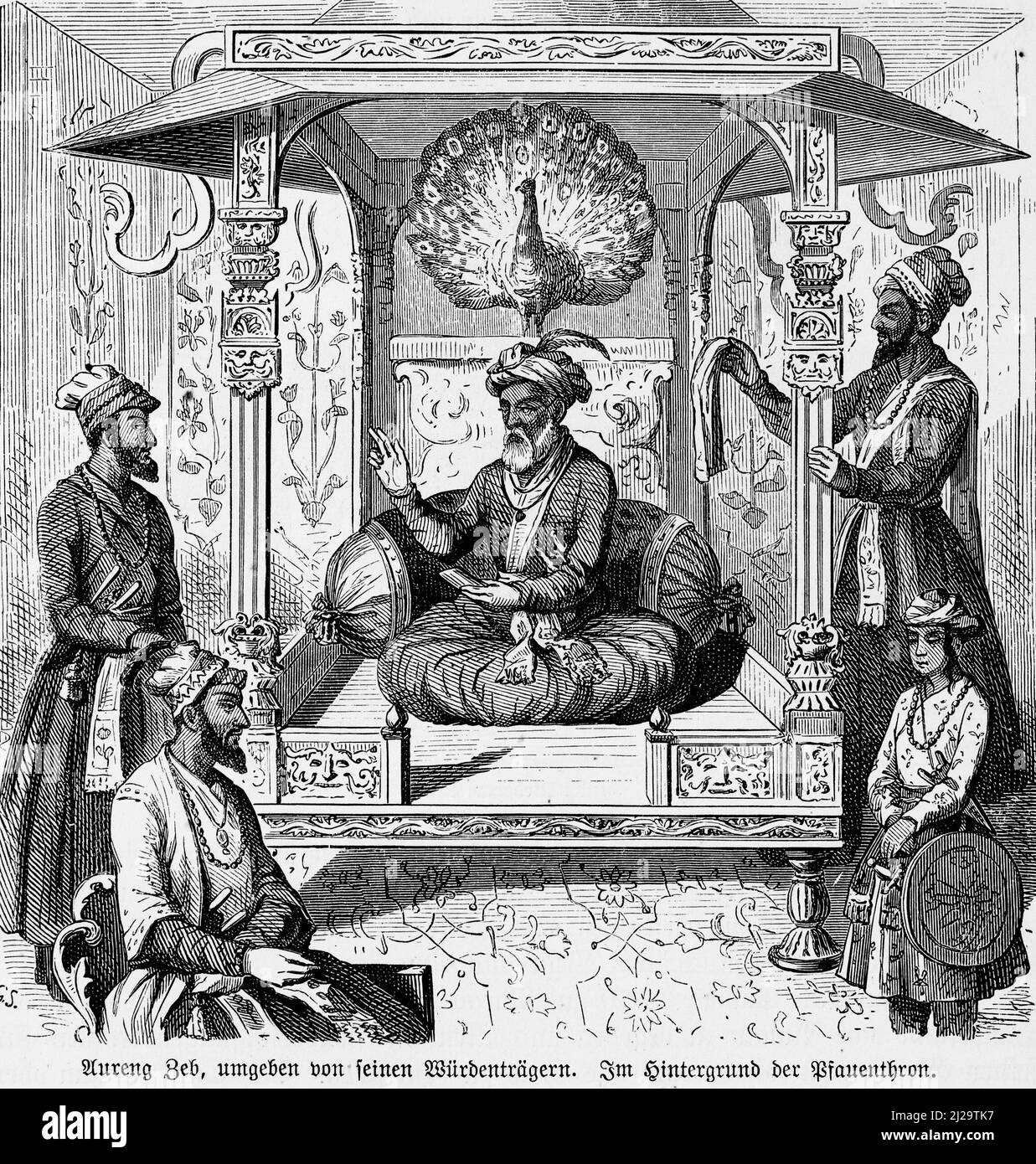 Aureng Zeb, Aurangzeb, Great Mogul, ruler, 17th century, peacock throne, enthroned, men, dignitaries, court, rich, power, peacock, sitting, standing Stock Photohttps://www.alamy.com/image-license-details/?v=1https://www.alamy.com/aureng-zeb-aurangzeb-great-mogul-ruler-17th-century-peacock-throne-enthroned-men-dignitaries-court-rich-power-peacock-sitting-standing-image466126171.html
Aureng Zeb, Aurangzeb, Great Mogul, ruler, 17th century, peacock throne, enthroned, men, dignitaries, court, rich, power, peacock, sitting, standing Stock Photohttps://www.alamy.com/image-license-details/?v=1https://www.alamy.com/aureng-zeb-aurangzeb-great-mogul-ruler-17th-century-peacock-throne-enthroned-men-dignitaries-court-rich-power-peacock-sitting-standing-image466126171.htmlRM2J29TK7–Aureng Zeb, Aurangzeb, Great Mogul, ruler, 17th century, peacock throne, enthroned, men, dignitaries, court, rich, power, peacock, sitting, standing
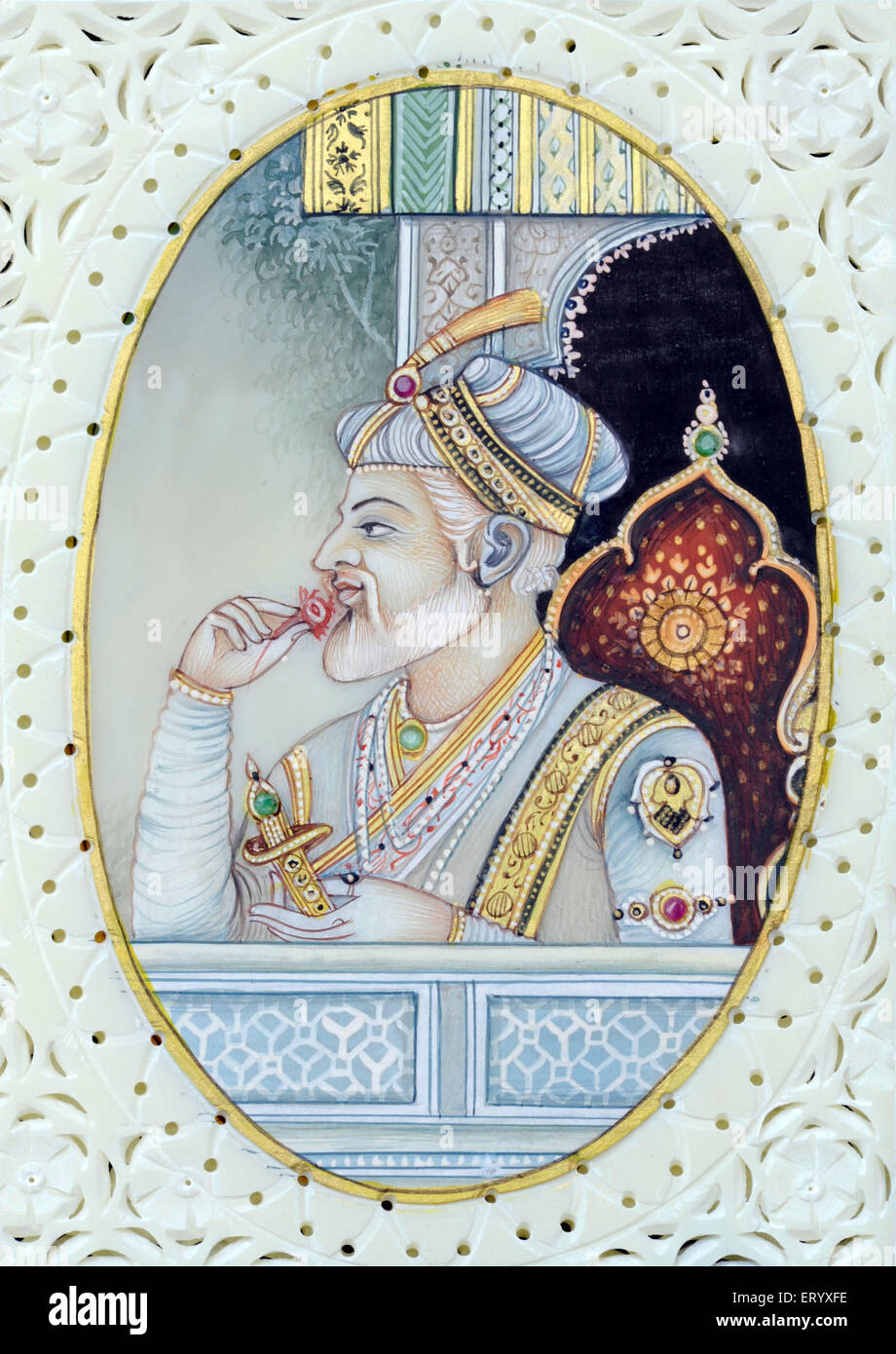 Miniature painting of mughal emperor aurangzeb Stock Photohttps://www.alamy.com/image-license-details/?v=1https://www.alamy.com/stock-photo-miniature-painting-of-mughal-emperor-aurangzeb-83592082.html
Miniature painting of mughal emperor aurangzeb Stock Photohttps://www.alamy.com/image-license-details/?v=1https://www.alamy.com/stock-photo-miniature-painting-of-mughal-emperor-aurangzeb-83592082.htmlRMERYXFE–Miniature painting of mughal emperor aurangzeb
 India: Azam Shah (28 June 1653 - 20 June 1707) wearing a purple dress and holding a round shield and a flower. Miniature painting, c. 1640. Qutb-ud-Din Muhammad Azam Shah was, albeit briefly, the 7th Mughal Emperor and third son of Emperor Aurangzeb. Azam had a long military career, and served as viceroy of various areas in the Mughal Empire. He was named heir-apparent in 1681, and ascended the throne in 1707 after his father's death. His older half-brother Shah Alam rose up against him however, and he was defeated and killed the same year, alongside his three sons. Stock Photohttps://www.alamy.com/image-license-details/?v=1https://www.alamy.com/india-azam-shah-28-june-1653-20-june-1707-wearing-a-purple-dress-and-holding-a-round-shield-and-a-flower-miniature-painting-c-1640-qutb-ud-din-muhammad-azam-shah-was-albeit-briefly-the-7th-mughal-emperor-and-third-son-of-emperor-aurangzeb-azam-had-a-long-military-career-and-served-as-viceroy-of-various-areas-in-the-mughal-empire-he-was-named-heir-apparent-in-1681-and-ascended-the-throne-in-1707-after-his-fathers-death-his-older-half-brother-shah-alam-rose-up-against-him-however-and-he-was-defeated-and-killed-the-same-year-alongside-his-three-sons-image344237992.html
India: Azam Shah (28 June 1653 - 20 June 1707) wearing a purple dress and holding a round shield and a flower. Miniature painting, c. 1640. Qutb-ud-Din Muhammad Azam Shah was, albeit briefly, the 7th Mughal Emperor and third son of Emperor Aurangzeb. Azam had a long military career, and served as viceroy of various areas in the Mughal Empire. He was named heir-apparent in 1681, and ascended the throne in 1707 after his father's death. His older half-brother Shah Alam rose up against him however, and he was defeated and killed the same year, alongside his three sons. Stock Photohttps://www.alamy.com/image-license-details/?v=1https://www.alamy.com/india-azam-shah-28-june-1653-20-june-1707-wearing-a-purple-dress-and-holding-a-round-shield-and-a-flower-miniature-painting-c-1640-qutb-ud-din-muhammad-azam-shah-was-albeit-briefly-the-7th-mughal-emperor-and-third-son-of-emperor-aurangzeb-azam-had-a-long-military-career-and-served-as-viceroy-of-various-areas-in-the-mughal-empire-he-was-named-heir-apparent-in-1681-and-ascended-the-throne-in-1707-after-his-fathers-death-his-older-half-brother-shah-alam-rose-up-against-him-however-and-he-was-defeated-and-killed-the-same-year-alongside-his-three-sons-image344237992.htmlRM2B01B20–India: Azam Shah (28 June 1653 - 20 June 1707) wearing a purple dress and holding a round shield and a flower. Miniature painting, c. 1640. Qutb-ud-Din Muhammad Azam Shah was, albeit briefly, the 7th Mughal Emperor and third son of Emperor Aurangzeb. Azam had a long military career, and served as viceroy of various areas in the Mughal Empire. He was named heir-apparent in 1681, and ascended the throne in 1707 after his father's death. His older half-brother Shah Alam rose up against him however, and he was defeated and killed the same year, alongside his three sons.
 Durbar of Aurangzieb, Aurangzeb, Darbar, Mughal Court, Mughal Emperor, Alamgir, Muhi ud Din Muhammad, India, old vintage 1700s picture Stock Photohttps://www.alamy.com/image-license-details/?v=1https://www.alamy.com/stock-photo-durbar-of-aurangzieb-aurangzeb-darbar-mughal-court-mughal-emperor-85274716.html
Durbar of Aurangzieb, Aurangzeb, Darbar, Mughal Court, Mughal Emperor, Alamgir, Muhi ud Din Muhammad, India, old vintage 1700s picture Stock Photohttps://www.alamy.com/image-license-details/?v=1https://www.alamy.com/stock-photo-durbar-of-aurangzieb-aurangzeb-darbar-mughal-court-mughal-emperor-85274716.htmlRMEXMGNG–Durbar of Aurangzieb, Aurangzeb, Darbar, Mughal Court, Mughal Emperor, Alamgir, Muhi ud Din Muhammad, India, old vintage 1700s picture
 . English: Aurangzeb is seated on the throne. His son Azam Shah stands before him, alongside other nobles and courtiers. 13 Aurangzeb on the throne Stock Photohttps://www.alamy.com/image-license-details/?v=1https://www.alamy.com/english-aurangzeb-is-seated-on-the-throne-his-son-azam-shah-stands-before-him-alongside-other-nobles-and-courtiers-13-aurangzeb-on-the-throne-image189268317.html
. English: Aurangzeb is seated on the throne. His son Azam Shah stands before him, alongside other nobles and courtiers. 13 Aurangzeb on the throne Stock Photohttps://www.alamy.com/image-license-details/?v=1https://www.alamy.com/english-aurangzeb-is-seated-on-the-throne-his-son-azam-shah-stands-before-him-alongside-other-nobles-and-courtiers-13-aurangzeb-on-the-throne-image189268317.htmlRMMYWWJN–. English: Aurangzeb is seated on the throne. His son Azam Shah stands before him, alongside other nobles and courtiers. 13 Aurangzeb on the throne
 Shah Jahan 's throne Agra Fort UNESCO World Heritage site Agra, Uttar Pradesh, India Stock Photohttps://www.alamy.com/image-license-details/?v=1https://www.alamy.com/stock-photo-shah-jahan-s-throne-agra-fort-unesco-world-heritage-site-agra-uttar-55647767.html
Shah Jahan 's throne Agra Fort UNESCO World Heritage site Agra, Uttar Pradesh, India Stock Photohttps://www.alamy.com/image-license-details/?v=1https://www.alamy.com/stock-photo-shah-jahan-s-throne-agra-fort-unesco-world-heritage-site-agra-uttar-55647767.htmlRMD6EY87–Shah Jahan 's throne Agra Fort UNESCO World Heritage site Agra, Uttar Pradesh, India
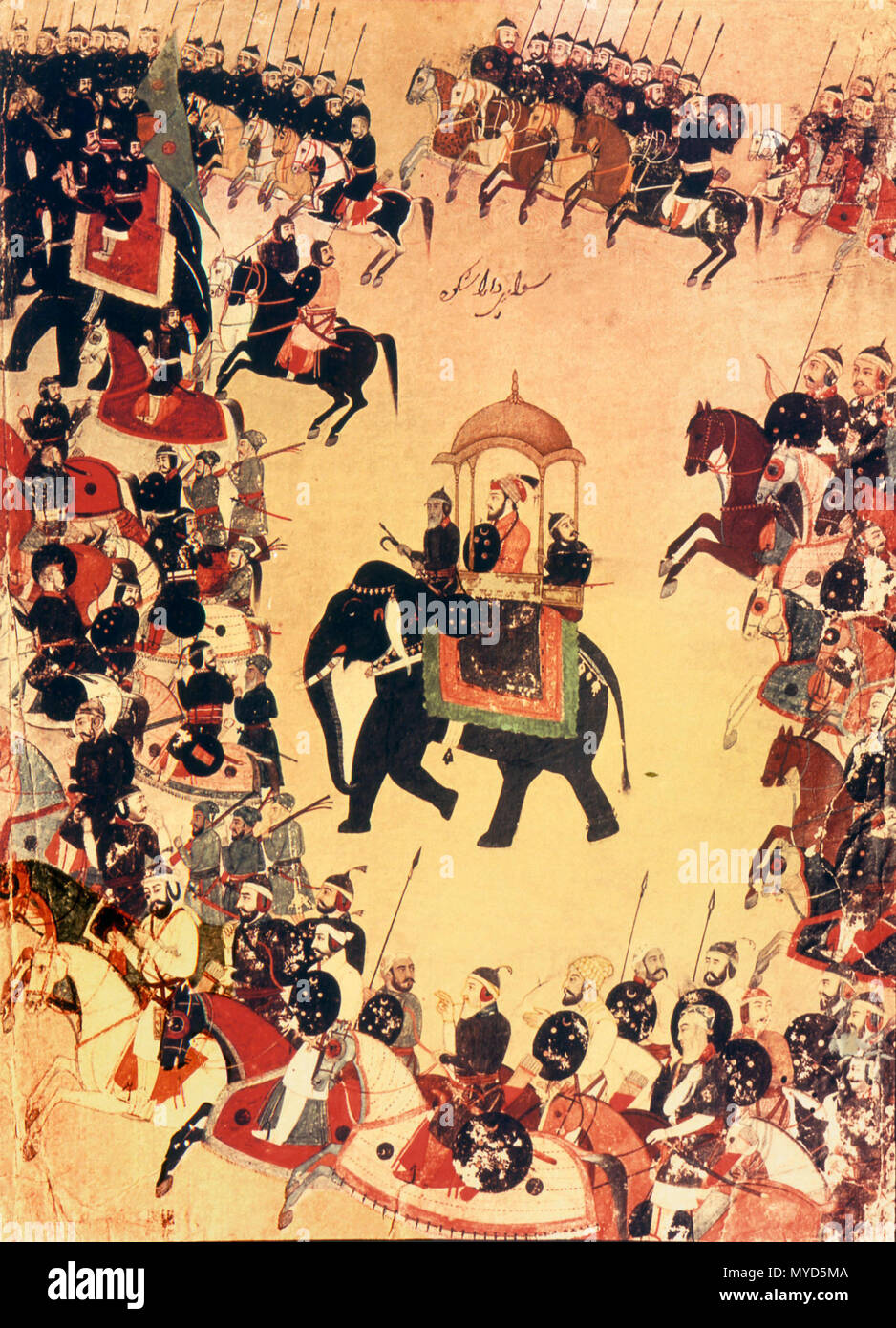 . An illustration of Dara Shikuh, Shah Jahan's son, with his army. In 1657 Shah Jahan fell ill, precipitating a struggle for succession among his four sons. Dara Shikuh was the eldest, but was defeated and executed by the youngest, Aurangzeb, who claimed the throne in 1659. Source: Red Fort Museum, Delhi. Werner Forman Archive (Registration required). 17th century. Unknown 132 Dara Shikuh with his army Stock Photohttps://www.alamy.com/image-license-details/?v=1https://www.alamy.com/an-illustration-of-dara-shikuh-shah-jahans-son-with-his-army-in-1657-shah-jahan-fell-ill-precipitating-a-struggle-for-succession-among-his-four-sons-dara-shikuh-was-the-eldest-but-was-defeated-and-executed-by-the-youngest-aurangzeb-who-claimed-the-throne-in-1659-source-red-fort-museum-delhi-werner-forman-archive-registration-required-17th-century-unknown-132-dara-shikuh-with-his-army-image188989258.html
. An illustration of Dara Shikuh, Shah Jahan's son, with his army. In 1657 Shah Jahan fell ill, precipitating a struggle for succession among his four sons. Dara Shikuh was the eldest, but was defeated and executed by the youngest, Aurangzeb, who claimed the throne in 1659. Source: Red Fort Museum, Delhi. Werner Forman Archive (Registration required). 17th century. Unknown 132 Dara Shikuh with his army Stock Photohttps://www.alamy.com/image-license-details/?v=1https://www.alamy.com/an-illustration-of-dara-shikuh-shah-jahans-son-with-his-army-in-1657-shah-jahan-fell-ill-precipitating-a-struggle-for-succession-among-his-four-sons-dara-shikuh-was-the-eldest-but-was-defeated-and-executed-by-the-youngest-aurangzeb-who-claimed-the-throne-in-1659-source-red-fort-museum-delhi-werner-forman-archive-registration-required-17th-century-unknown-132-dara-shikuh-with-his-army-image188989258.htmlRMMYD5MA–. An illustration of Dara Shikuh, Shah Jahan's son, with his army. In 1657 Shah Jahan fell ill, precipitating a struggle for succession among his four sons. Dara Shikuh was the eldest, but was defeated and executed by the youngest, Aurangzeb, who claimed the throne in 1659. Source: Red Fort Museum, Delhi. Werner Forman Archive (Registration required). 17th century. Unknown 132 Dara Shikuh with his army
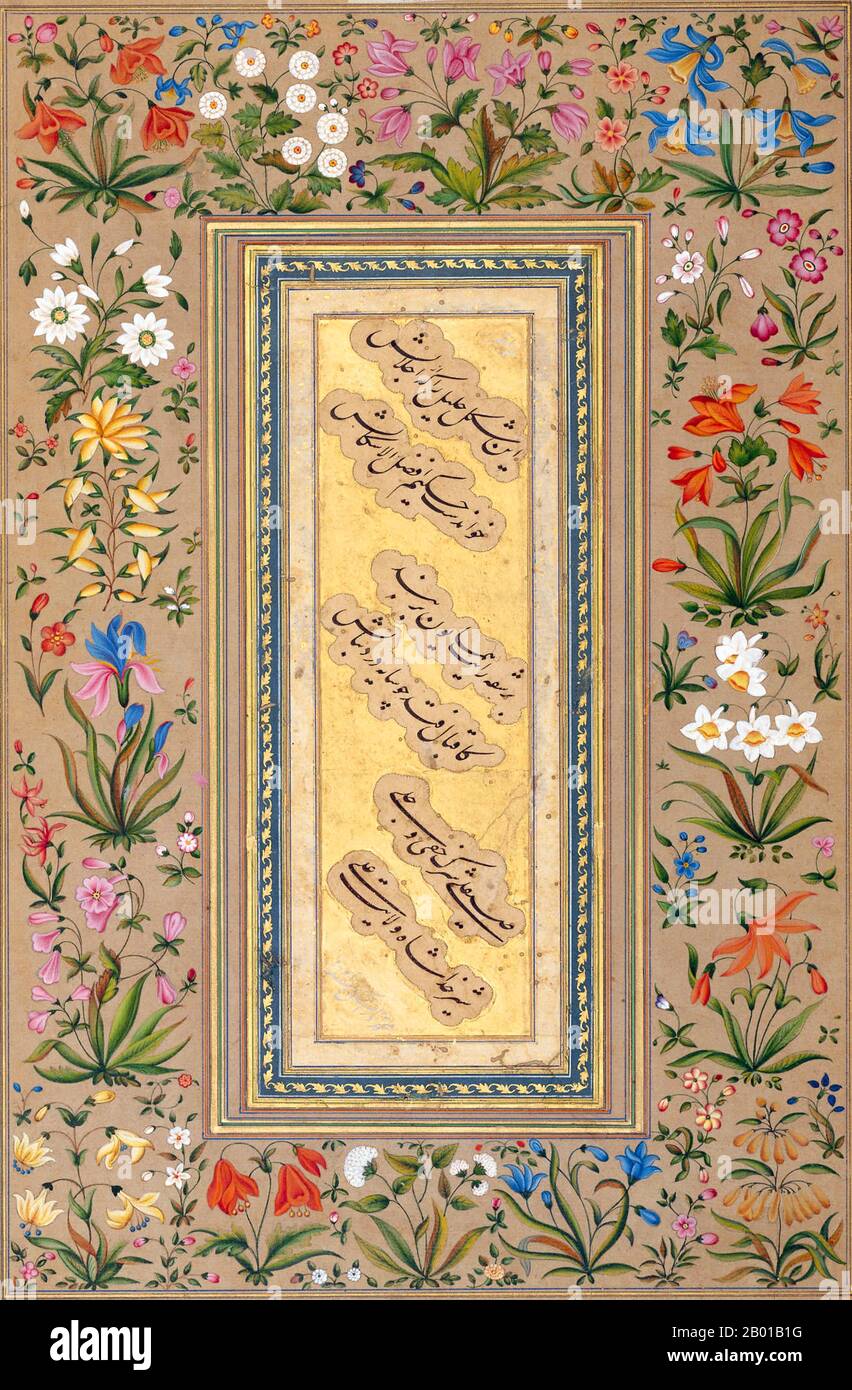 India: Calligraphy by Prince Dara Shikoh (20 March 1615 - 30 August 1639), Mughal, c. 1631-1632. His Highness, The Imperial Prince (Shahzada) Muhammad Dara Shikoh/Shukoh was the eldest son and the heir apparent of the Mughal Emperor Shah Jahan and his wife Mumtaz Mahal. He was favoured as a successor by his father, but was defeated by his younger brother Prince Muhiuddin (later the Emperor Aurangzeb) in a bitter struggle for the Imperial throne. The course of the history of the Indian subcontinent, had Dara prevailed over Aurangzeb, has been a matter of some conjecture among historians. Stock Photohttps://www.alamy.com/image-license-details/?v=1https://www.alamy.com/india-calligraphy-by-prince-dara-shikoh-20-march-1615-30-august-1639-mughal-c-1631-1632-his-highness-the-imperial-prince-shahzada-muhammad-dara-shikohshukoh-was-the-eldest-son-and-the-heir-apparent-of-the-mughal-emperor-shah-jahan-and-his-wife-mumtaz-mahal-he-was-favoured-as-a-successor-by-his-father-but-was-defeated-by-his-younger-brother-prince-muhiuddin-later-the-emperor-aurangzeb-in-a-bitter-struggle-for-the-imperial-throne-the-course-of-the-history-of-the-indian-subcontinent-had-dara-prevailed-over-aurangzeb-has-been-a-matter-of-some-conjecture-among-historians-image344237980.html
India: Calligraphy by Prince Dara Shikoh (20 March 1615 - 30 August 1639), Mughal, c. 1631-1632. His Highness, The Imperial Prince (Shahzada) Muhammad Dara Shikoh/Shukoh was the eldest son and the heir apparent of the Mughal Emperor Shah Jahan and his wife Mumtaz Mahal. He was favoured as a successor by his father, but was defeated by his younger brother Prince Muhiuddin (later the Emperor Aurangzeb) in a bitter struggle for the Imperial throne. The course of the history of the Indian subcontinent, had Dara prevailed over Aurangzeb, has been a matter of some conjecture among historians. Stock Photohttps://www.alamy.com/image-license-details/?v=1https://www.alamy.com/india-calligraphy-by-prince-dara-shikoh-20-march-1615-30-august-1639-mughal-c-1631-1632-his-highness-the-imperial-prince-shahzada-muhammad-dara-shikohshukoh-was-the-eldest-son-and-the-heir-apparent-of-the-mughal-emperor-shah-jahan-and-his-wife-mumtaz-mahal-he-was-favoured-as-a-successor-by-his-father-but-was-defeated-by-his-younger-brother-prince-muhiuddin-later-the-emperor-aurangzeb-in-a-bitter-struggle-for-the-imperial-throne-the-course-of-the-history-of-the-indian-subcontinent-had-dara-prevailed-over-aurangzeb-has-been-a-matter-of-some-conjecture-among-historians-image344237980.htmlRM2B01B1G–India: Calligraphy by Prince Dara Shikoh (20 March 1615 - 30 August 1639), Mughal, c. 1631-1632. His Highness, The Imperial Prince (Shahzada) Muhammad Dara Shikoh/Shukoh was the eldest son and the heir apparent of the Mughal Emperor Shah Jahan and his wife Mumtaz Mahal. He was favoured as a successor by his father, but was defeated by his younger brother Prince Muhiuddin (later the Emperor Aurangzeb) in a bitter struggle for the Imperial throne. The course of the history of the Indian subcontinent, had Dara prevailed over Aurangzeb, has been a matter of some conjecture among historians.
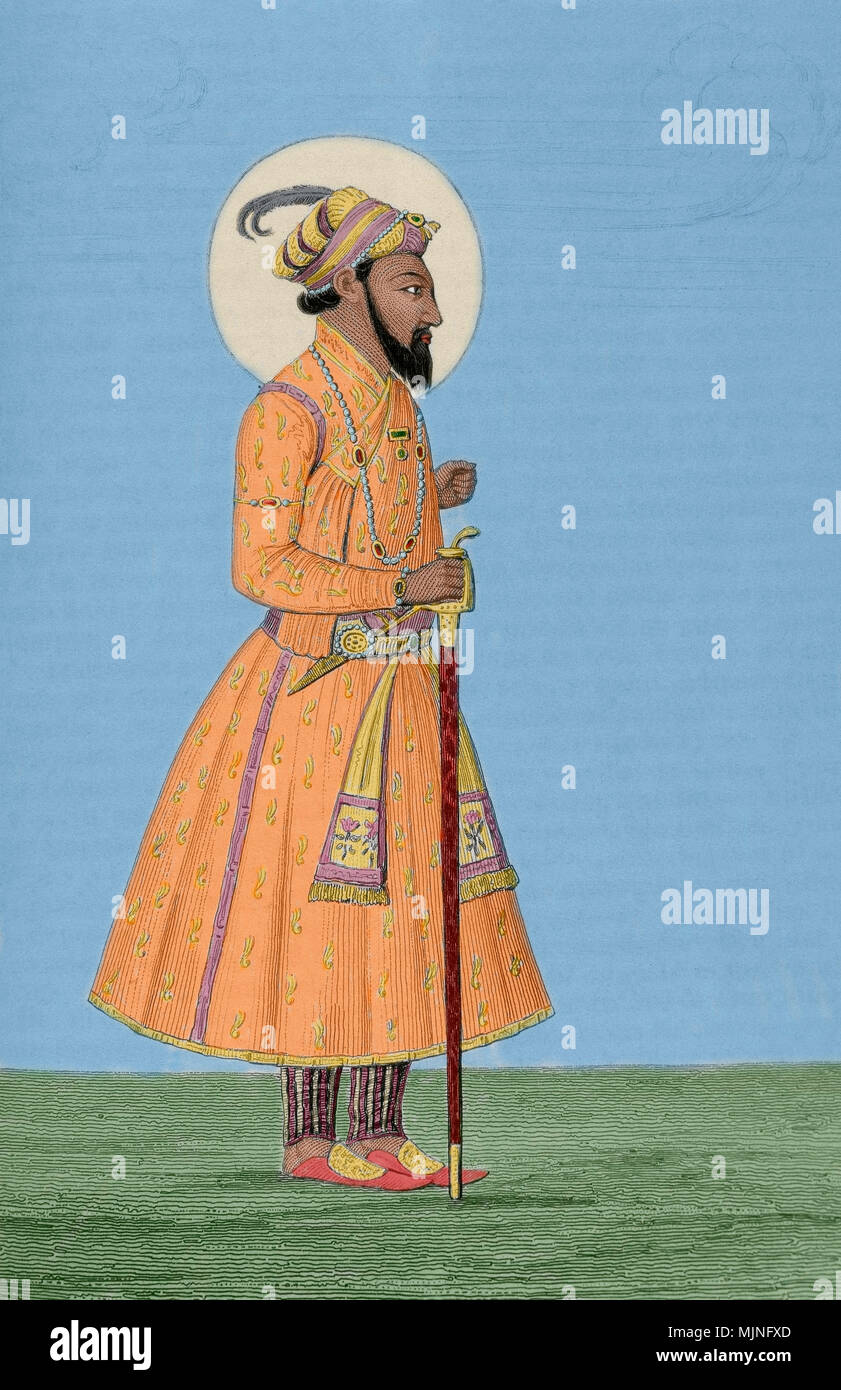 Dara Shukoh (Ajmer, 1615-Delhi, 1659). Also known as Dara Shikoh. Elder son of the fifth Mugal emperor Sha Jahan and his wife Mumtaz Mahal. He was defeated by his younger brother Aurangzeb in the fight for the throne of the empire. Engraving, 1845. Later colouration. Stock Photohttps://www.alamy.com/image-license-details/?v=1https://www.alamy.com/dara-shukoh-ajmer-1615-delhi-1659-also-known-as-dara-shikoh-elder-son-of-the-fifth-mugal-emperor-sha-jahan-and-his-wife-mumtaz-mahal-he-was-defeated-by-his-younger-brother-aurangzeb-in-the-fight-for-the-throne-of-the-empire-engraving-1845-later-colouration-image183640981.html
Dara Shukoh (Ajmer, 1615-Delhi, 1659). Also known as Dara Shikoh. Elder son of the fifth Mugal emperor Sha Jahan and his wife Mumtaz Mahal. He was defeated by his younger brother Aurangzeb in the fight for the throne of the empire. Engraving, 1845. Later colouration. Stock Photohttps://www.alamy.com/image-license-details/?v=1https://www.alamy.com/dara-shukoh-ajmer-1615-delhi-1659-also-known-as-dara-shikoh-elder-son-of-the-fifth-mugal-emperor-sha-jahan-and-his-wife-mumtaz-mahal-he-was-defeated-by-his-younger-brother-aurangzeb-in-the-fight-for-the-throne-of-the-empire-engraving-1845-later-colouration-image183640981.htmlRMMJNFXD–Dara Shukoh (Ajmer, 1615-Delhi, 1659). Also known as Dara Shikoh. Elder son of the fifth Mugal emperor Sha Jahan and his wife Mumtaz Mahal. He was defeated by his younger brother Aurangzeb in the fight for the throne of the empire. Engraving, 1845. Later colouration.
 India: An extravagant ceremony involving musicians, elephants, guests on horseback and servants carrying trays of gifts to the house of the bride of Prince Dara Shikoh, the heir apparent to the Mughal throne. Painting by Bishandas (fl. 17th century), c. 1656-1657. Prince Dara Shikoh (1615—59) was the eldest son and the heir apparent of the Mughal Emperor Shah Jahan and his wife Mumtaz Mahal. His name in Persian means ‘Darius the Magnificent’ and he was favoured as a successor by his father and his sister Jahanara Begum, but was defeated by his younger brother Aurangzeb in a bitter struggle. Stock Photohttps://www.alamy.com/image-license-details/?v=1https://www.alamy.com/india-an-extravagant-ceremony-involving-musicians-elephants-guests-on-horseback-and-servants-carrying-trays-of-gifts-to-the-house-of-the-bride-of-prince-dara-shikoh-the-heir-apparent-to-the-mughal-throne-painting-by-bishandas-fl-17th-century-c-1656-1657-prince-dara-shikoh-161559-was-the-eldest-son-and-the-heir-apparent-of-the-mughal-emperor-shah-jahan-and-his-wife-mumtaz-mahal-his-name-in-persian-means-darius-the-magnificent-and-he-was-favoured-as-a-successor-by-his-father-and-his-sister-jahanara-begum-but-was-defeated-by-his-younger-brother-aurangzeb-in-a-bitter-struggle-image344229388.html
India: An extravagant ceremony involving musicians, elephants, guests on horseback and servants carrying trays of gifts to the house of the bride of Prince Dara Shikoh, the heir apparent to the Mughal throne. Painting by Bishandas (fl. 17th century), c. 1656-1657. Prince Dara Shikoh (1615—59) was the eldest son and the heir apparent of the Mughal Emperor Shah Jahan and his wife Mumtaz Mahal. His name in Persian means ‘Darius the Magnificent’ and he was favoured as a successor by his father and his sister Jahanara Begum, but was defeated by his younger brother Aurangzeb in a bitter struggle. Stock Photohttps://www.alamy.com/image-license-details/?v=1https://www.alamy.com/india-an-extravagant-ceremony-involving-musicians-elephants-guests-on-horseback-and-servants-carrying-trays-of-gifts-to-the-house-of-the-bride-of-prince-dara-shikoh-the-heir-apparent-to-the-mughal-throne-painting-by-bishandas-fl-17th-century-c-1656-1657-prince-dara-shikoh-161559-was-the-eldest-son-and-the-heir-apparent-of-the-mughal-emperor-shah-jahan-and-his-wife-mumtaz-mahal-his-name-in-persian-means-darius-the-magnificent-and-he-was-favoured-as-a-successor-by-his-father-and-his-sister-jahanara-begum-but-was-defeated-by-his-younger-brother-aurangzeb-in-a-bitter-struggle-image344229388.htmlRM2B0102M–India: An extravagant ceremony involving musicians, elephants, guests on horseback and servants carrying trays of gifts to the house of the bride of Prince Dara Shikoh, the heir apparent to the Mughal throne. Painting by Bishandas (fl. 17th century), c. 1656-1657. Prince Dara Shikoh (1615—59) was the eldest son and the heir apparent of the Mughal Emperor Shah Jahan and his wife Mumtaz Mahal. His name in Persian means ‘Darius the Magnificent’ and he was favoured as a successor by his father and his sister Jahanara Begum, but was defeated by his younger brother Aurangzeb in a bitter struggle.
 The emperor Aurangzeb enthroned, receives a courtier who stands before him holding a sword. A prince stands on the left of the throne, with a small circular canopy above. In the background is a hillside and trees on the horizon. Johnson Collection. c.1660. Opaque watercolour. Gouache with gold. Source: J.2,5. Author: Khemanand. Stock Photohttps://www.alamy.com/image-license-details/?v=1https://www.alamy.com/the-emperor-aurangzeb-enthroned-receives-a-courtier-who-stands-before-him-holding-a-sword-a-prince-stands-on-the-left-of-the-throne-with-a-small-circular-canopy-above-in-the-background-is-a-hillside-and-trees-on-the-horizon-johnson-collection-c1660-opaque-watercolour-gouache-with-gold-source-j25-author-khemanand-image231443585.html
The emperor Aurangzeb enthroned, receives a courtier who stands before him holding a sword. A prince stands on the left of the throne, with a small circular canopy above. In the background is a hillside and trees on the horizon. Johnson Collection. c.1660. Opaque watercolour. Gouache with gold. Source: J.2,5. Author: Khemanand. Stock Photohttps://www.alamy.com/image-license-details/?v=1https://www.alamy.com/the-emperor-aurangzeb-enthroned-receives-a-courtier-who-stands-before-him-holding-a-sword-a-prince-stands-on-the-left-of-the-throne-with-a-small-circular-canopy-above-in-the-background-is-a-hillside-and-trees-on-the-horizon-johnson-collection-c1660-opaque-watercolour-gouache-with-gold-source-j25-author-khemanand-image231443585.htmlRMRCF4J9–The emperor Aurangzeb enthroned, receives a courtier who stands before him holding a sword. A prince stands on the left of the throne, with a small circular canopy above. In the background is a hillside and trees on the horizon. Johnson Collection. c.1660. Opaque watercolour. Gouache with gold. Source: J.2,5. Author: Khemanand.
 The throne hall of the Mughal Emperors in the Delhi Fort, 1875. Artist: Vereshchagin, Vasili Vasilyevich (1842-1904) Stock Photohttps://www.alamy.com/image-license-details/?v=1https://www.alamy.com/the-throne-hall-of-the-mughal-emperors-in-the-delhi-fort-1875-artist-image60431649.html
The throne hall of the Mughal Emperors in the Delhi Fort, 1875. Artist: Vereshchagin, Vasili Vasilyevich (1842-1904) Stock Photohttps://www.alamy.com/image-license-details/?v=1https://www.alamy.com/the-throne-hall-of-the-mughal-emperors-in-the-delhi-fort-1875-artist-image60431649.htmlRMDE8W55–The throne hall of the Mughal Emperors in the Delhi Fort, 1875. Artist: Vereshchagin, Vasili Vasilyevich (1842-1904)
 Aurangzeb sitting on his throne, receiving the news of the martyrdom of Guru Tegh Bahadur and the Guru’s companions, Bhai Mati Das and Bhai Dayala Das at Delhi’s Chandi Chowk. Stock Photohttps://www.alamy.com/image-license-details/?v=1https://www.alamy.com/aurangzeb-sitting-on-his-throne-receiving-the-news-of-the-martyrdom-of-guru-tegh-bahadur-and-the-gurus-companions-bhai-mati-das-and-bhai-dayala-das-at-delhis-chandi-chowk-image595587881.html
Aurangzeb sitting on his throne, receiving the news of the martyrdom of Guru Tegh Bahadur and the Guru’s companions, Bhai Mati Das and Bhai Dayala Das at Delhi’s Chandi Chowk. Stock Photohttps://www.alamy.com/image-license-details/?v=1https://www.alamy.com/aurangzeb-sitting-on-his-throne-receiving-the-news-of-the-martyrdom-of-guru-tegh-bahadur-and-the-gurus-companions-bhai-mati-das-and-bhai-dayala-das-at-delhis-chandi-chowk-image595587881.htmlRM2WGYABN–Aurangzeb sitting on his throne, receiving the news of the martyrdom of Guru Tegh Bahadur and the Guru’s companions, Bhai Mati Das and Bhai Dayala Das at Delhi’s Chandi Chowk.
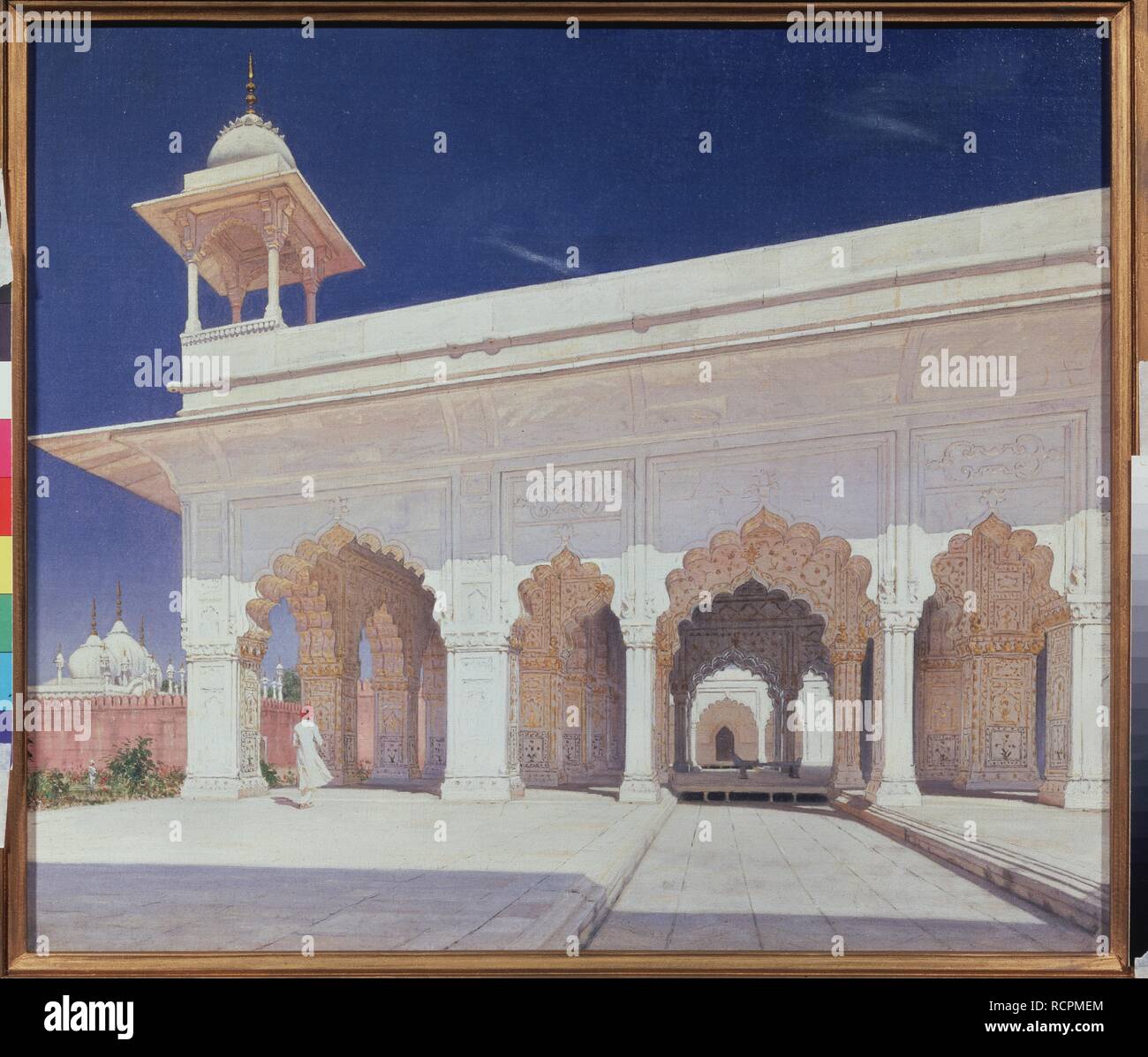 The throne hall of the Mughal Emperors in the Delhi Fort. Museum: State Tretyakov Gallery, Moscow. Author: Vereshchagin, Vasili Vasilyevich. Stock Photohttps://www.alamy.com/image-license-details/?v=1https://www.alamy.com/the-throne-hall-of-the-mughal-emperors-in-the-delhi-fort-museum-state-tretyakov-gallery-moscow-author-vereshchagin-vasili-vasilyevich-image231609692.html
The throne hall of the Mughal Emperors in the Delhi Fort. Museum: State Tretyakov Gallery, Moscow. Author: Vereshchagin, Vasili Vasilyevich. Stock Photohttps://www.alamy.com/image-license-details/?v=1https://www.alamy.com/the-throne-hall-of-the-mughal-emperors-in-the-delhi-fort-museum-state-tretyakov-gallery-moscow-author-vereshchagin-vasili-vasilyevich-image231609692.htmlRMRCPMEM–The throne hall of the Mughal Emperors in the Delhi Fort. Museum: State Tretyakov Gallery, Moscow. Author: Vereshchagin, Vasili Vasilyevich.
 Dara Shikoh (1615-1659) Stock Photohttps://www.alamy.com/image-license-details/?v=1https://www.alamy.com/stock-image-dara-shikoh-1615-1659-163710909.html
Dara Shikoh (1615-1659) Stock Photohttps://www.alamy.com/image-license-details/?v=1https://www.alamy.com/stock-image-dara-shikoh-1615-1659-163710909.htmlRMKE9JX5–Dara Shikoh (1615-1659)
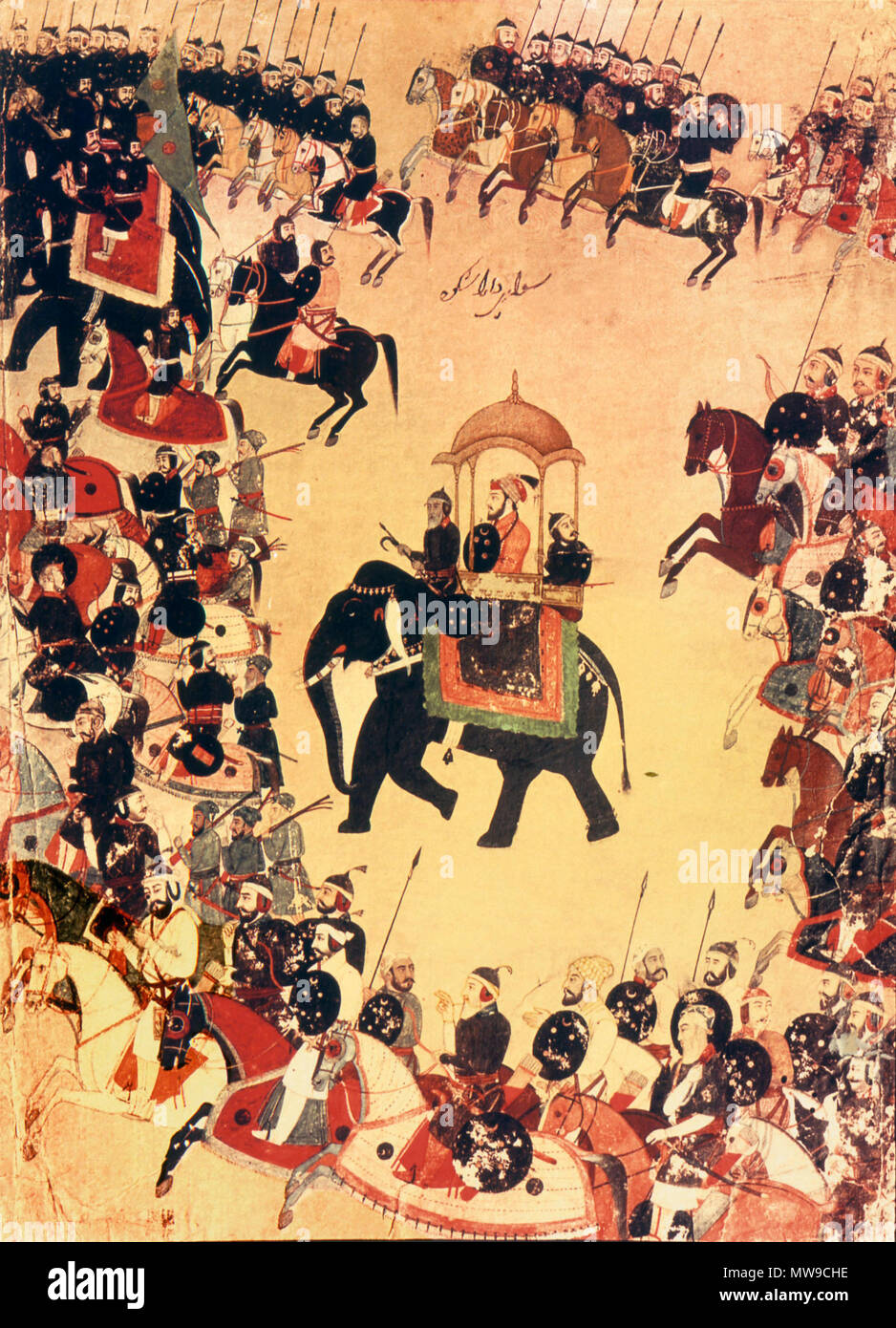 . An illustration of Dara Shikuh, Shah Jahan's son, with his army. In 1657 Shah Jahan fell ill, precipitating a struggle for succession among his four sons. Dara Shikuh was the eldest, but was defeated and executed by the youngest, Aurangzeb, who claimed the throne in 1659. Source: Red Fort Museum, Delhi. Werner Forman Archive (Registration required). 17th century. Unknown 152 Dara Shikuh with his army Stock Photohttps://www.alamy.com/image-license-details/?v=1https://www.alamy.com/an-illustration-of-dara-shikuh-shah-jahans-son-with-his-army-in-1657-shah-jahan-fell-ill-precipitating-a-struggle-for-succession-among-his-four-sons-dara-shikuh-was-the-eldest-but-was-defeated-and-executed-by-the-youngest-aurangzeb-who-claimed-the-throne-in-1659-source-red-fort-museum-delhi-werner-forman-archive-registration-required-17th-century-unknown-152-dara-shikuh-with-his-army-image187677546.html
. An illustration of Dara Shikuh, Shah Jahan's son, with his army. In 1657 Shah Jahan fell ill, precipitating a struggle for succession among his four sons. Dara Shikuh was the eldest, but was defeated and executed by the youngest, Aurangzeb, who claimed the throne in 1659. Source: Red Fort Museum, Delhi. Werner Forman Archive (Registration required). 17th century. Unknown 152 Dara Shikuh with his army Stock Photohttps://www.alamy.com/image-license-details/?v=1https://www.alamy.com/an-illustration-of-dara-shikuh-shah-jahans-son-with-his-army-in-1657-shah-jahan-fell-ill-precipitating-a-struggle-for-succession-among-his-four-sons-dara-shikuh-was-the-eldest-but-was-defeated-and-executed-by-the-youngest-aurangzeb-who-claimed-the-throne-in-1659-source-red-fort-museum-delhi-werner-forman-archive-registration-required-17th-century-unknown-152-dara-shikuh-with-his-army-image187677546.htmlRMMW9CHE–. An illustration of Dara Shikuh, Shah Jahan's son, with his army. In 1657 Shah Jahan fell ill, precipitating a struggle for succession among his four sons. Dara Shikuh was the eldest, but was defeated and executed by the youngest, Aurangzeb, who claimed the throne in 1659. Source: Red Fort Museum, Delhi. Werner Forman Archive (Registration required). 17th century. Unknown 152 Dara Shikuh with his army
 India: An extravagant ceremony involving musicians, elephants, guests on horseback and servants carrying trays of gifts to the house of the bride of Prince Dara Shikoh, the heir apparent to the Mughal throne. Painting by Bishandas (fl. 17th century), c. 1656-1657. Prince Dara Shikoh (1615—59) was the eldest son and the heir apparent of the Mughal Emperor Shah Jahan and his wife Mumtaz Mahal. His name in Persian means ‘Darius the Magnificent’ and he was favoured as a successor by his father and his sister Jahanara Begum, but was defeated by his younger brother Aurangzeb in a bitter struggle. Stock Photohttps://www.alamy.com/image-license-details/?v=1https://www.alamy.com/india-an-extravagant-ceremony-involving-musicians-elephants-guests-on-horseback-and-servants-carrying-trays-of-gifts-to-the-house-of-the-bride-of-prince-dara-shikoh-the-heir-apparent-to-the-mughal-throne-painting-by-bishandas-fl-17th-century-c-1656-1657-prince-dara-shikoh-161559-was-the-eldest-son-and-the-heir-apparent-of-the-mughal-emperor-shah-jahan-and-his-wife-mumtaz-mahal-his-name-in-persian-means-darius-the-magnificent-and-he-was-favoured-as-a-successor-by-his-father-and-his-sister-jahanara-begum-but-was-defeated-by-his-younger-brother-aurangzeb-in-a-bitter-struggle-image344229383.html
India: An extravagant ceremony involving musicians, elephants, guests on horseback and servants carrying trays of gifts to the house of the bride of Prince Dara Shikoh, the heir apparent to the Mughal throne. Painting by Bishandas (fl. 17th century), c. 1656-1657. Prince Dara Shikoh (1615—59) was the eldest son and the heir apparent of the Mughal Emperor Shah Jahan and his wife Mumtaz Mahal. His name in Persian means ‘Darius the Magnificent’ and he was favoured as a successor by his father and his sister Jahanara Begum, but was defeated by his younger brother Aurangzeb in a bitter struggle. Stock Photohttps://www.alamy.com/image-license-details/?v=1https://www.alamy.com/india-an-extravagant-ceremony-involving-musicians-elephants-guests-on-horseback-and-servants-carrying-trays-of-gifts-to-the-house-of-the-bride-of-prince-dara-shikoh-the-heir-apparent-to-the-mughal-throne-painting-by-bishandas-fl-17th-century-c-1656-1657-prince-dara-shikoh-161559-was-the-eldest-son-and-the-heir-apparent-of-the-mughal-emperor-shah-jahan-and-his-wife-mumtaz-mahal-his-name-in-persian-means-darius-the-magnificent-and-he-was-favoured-as-a-successor-by-his-father-and-his-sister-jahanara-begum-but-was-defeated-by-his-younger-brother-aurangzeb-in-a-bitter-struggle-image344229383.htmlRM2B0102F–India: An extravagant ceremony involving musicians, elephants, guests on horseback and servants carrying trays of gifts to the house of the bride of Prince Dara Shikoh, the heir apparent to the Mughal throne. Painting by Bishandas (fl. 17th century), c. 1656-1657. Prince Dara Shikoh (1615—59) was the eldest son and the heir apparent of the Mughal Emperor Shah Jahan and his wife Mumtaz Mahal. His name in Persian means ‘Darius the Magnificent’ and he was favoured as a successor by his father and his sister Jahanara Begum, but was defeated by his younger brother Aurangzeb in a bitter struggle.
 . An illustration of Dara Shikuh, Shah Jahan's son, with his army. In 1657 Shah Jahan fell ill, precipitating a struggle for succession among his four sons. Dara Shikuh was the eldest, but was defeated and executed by the youngest, Aurangzeb, who claimed the throne in 1659. Source: Red Fort Museum, Delhi. Werner Forman Archive (Registration required). 17th century. Unknown 153 Dara Shikuh with his army Stock Photohttps://www.alamy.com/image-license-details/?v=1https://www.alamy.com/an-illustration-of-dara-shikuh-shah-jahans-son-with-his-army-in-1657-shah-jahan-fell-ill-precipitating-a-struggle-for-succession-among-his-four-sons-dara-shikuh-was-the-eldest-but-was-defeated-and-executed-by-the-youngest-aurangzeb-who-claimed-the-throne-in-1659-source-red-fort-museum-delhi-werner-forman-archive-registration-required-17th-century-unknown-153-dara-shikuh-with-his-army-image188242018.html
. An illustration of Dara Shikuh, Shah Jahan's son, with his army. In 1657 Shah Jahan fell ill, precipitating a struggle for succession among his four sons. Dara Shikuh was the eldest, but was defeated and executed by the youngest, Aurangzeb, who claimed the throne in 1659. Source: Red Fort Museum, Delhi. Werner Forman Archive (Registration required). 17th century. Unknown 153 Dara Shikuh with his army Stock Photohttps://www.alamy.com/image-license-details/?v=1https://www.alamy.com/an-illustration-of-dara-shikuh-shah-jahans-son-with-his-army-in-1657-shah-jahan-fell-ill-precipitating-a-struggle-for-succession-among-his-four-sons-dara-shikuh-was-the-eldest-but-was-defeated-and-executed-by-the-youngest-aurangzeb-who-claimed-the-throne-in-1659-source-red-fort-museum-delhi-werner-forman-archive-registration-required-17th-century-unknown-153-dara-shikuh-with-his-army-image188242018.htmlRMMX74H6–. An illustration of Dara Shikuh, Shah Jahan's son, with his army. In 1657 Shah Jahan fell ill, precipitating a struggle for succession among his four sons. Dara Shikuh was the eldest, but was defeated and executed by the youngest, Aurangzeb, who claimed the throne in 1659. Source: Red Fort Museum, Delhi. Werner Forman Archive (Registration required). 17th century. Unknown 153 Dara Shikuh with his army